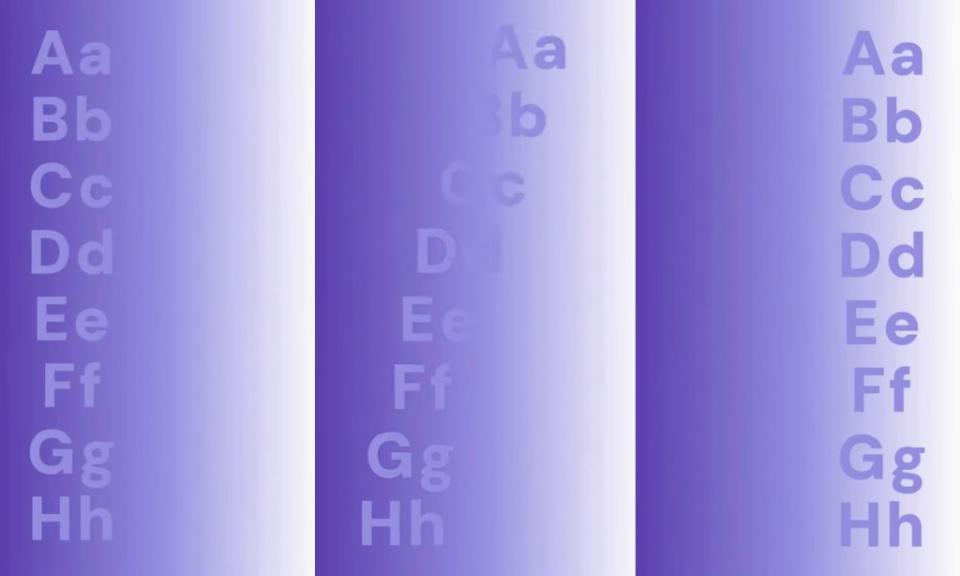Baffling optical illusion challenges our perception of color

Color us confused.
A head-scratching optical illusion challenges the perception of color and how the brain plays tricks on us.
In an image created by the UK contact lens vendor Lenstore, a series of lilac letters cascades down each side of the image and a row of ABC’s spanning diagonally across the purple gradient background.
Despite the lettering remaining the same color, where the characters appearing darker or lighter depending on where they fall on the backdrop.
Against the darker purple, the letters appear to be a lighter shade, while they appear darker when placed atop a periwinkle background. Meanwhile, the diagonal letters appear to change colors as they move across the gradient.

The illusion is successfully puzzling due to the cells in our retina, which responsible for sensing light. While cone cells determine color, the rods judge brightness, explained optometrist Roshni Patel, the head of professional services at Lenstore.
“They then pass information through signals via the optic nerve to the brain, where it then tries to figure out what we are seeing by what signals it receives,” he told The Mirror.
“Certain exposure to brightness, patterns and colors can impact perceptions and that is what occurs when we see this color saturation optical illusion.”

The illusion is reminiscent of the viral debate over the black-and-blue or gold-and-white dress from nearly a decade ago, where the internet failed to reach consensus as to what color the frock really appeared to be.
Similarly, an illusion created by Japanese psychologist Akiyoshi Kitaoka shows a gradient of pink to blue, with a small square traveling across the image. While the box appears to morph into different colors as it moves, the hue actually remains the same.


